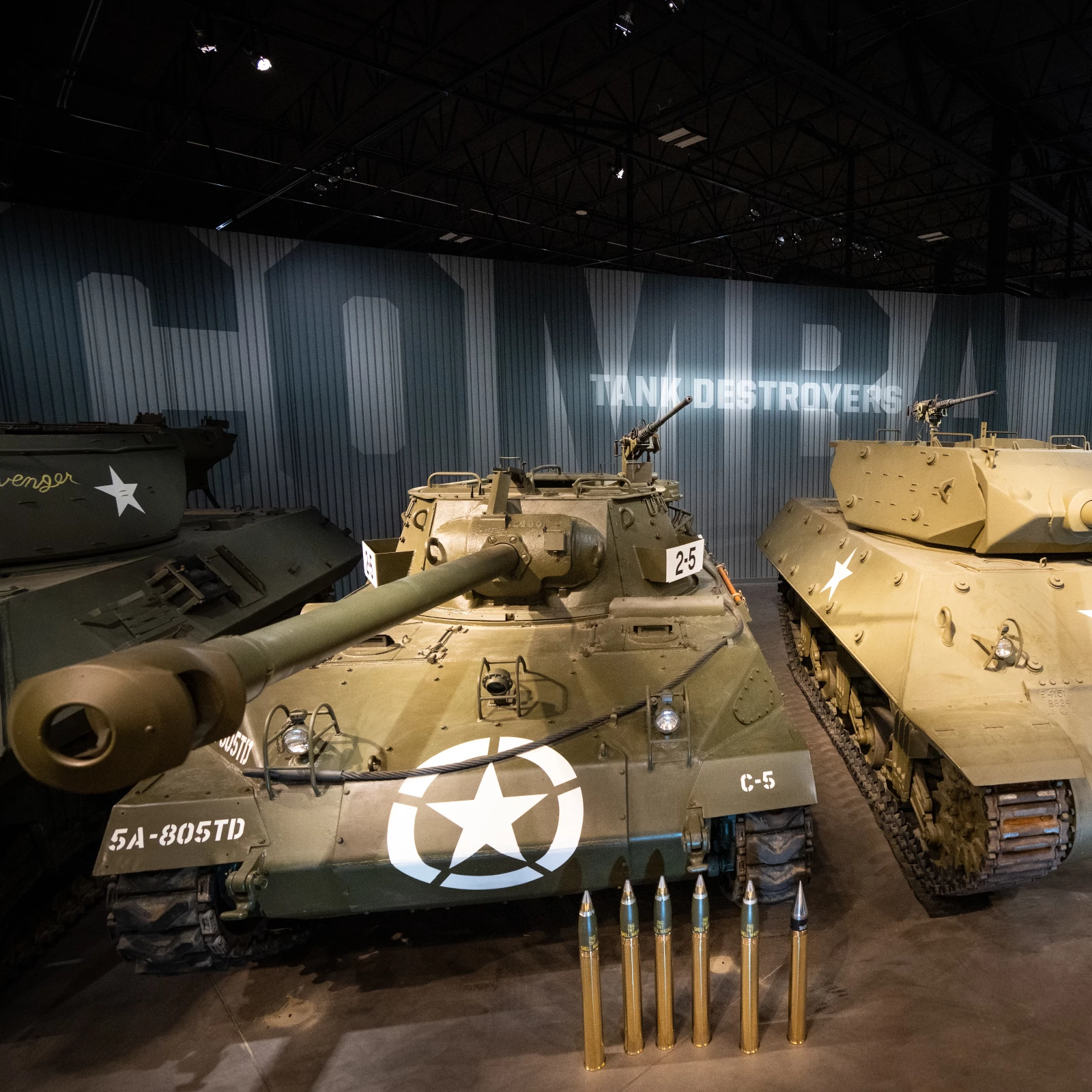Gen. George C. Marshall Gallery
Our World War II Gallery is named in honor of Gen. George C. Marshall, who was the U.S. Army Chief of Staff during World War II and the architect of the famous Marshall Plan, which aimed to restore the economic infrastructure of Europe following the Second World War.
Our General George C. Marshall Gallery follows the events of World War II, during which the Japanese attack on Pearl Harbor and Hitler’s subsequent declaration of war on the United States ended American neutrality and isolationism. With ongoing battles in Europe, Asia and Africa, World War II engulfed the planet. By the time it had finally come to an end nearly four years later, 76 million people had died worldwide.

The General George C. Marshall Gallery includes the following exhibits:
Amphibious Landings
Many major American campaign during the Second World War began with an amphibious landing, and so our World War II gallery begins with this exhibit. Amphibious Landings features a number of amphibious vehicles, including the iconic Higgins Boat and an LVT-4.
Defeat at the Philippines
This exhibit introduces Americans’ first major land battle against the Imperial Japanese forces. It also encourages guests to remember the largest surrender in American history, followed by the Bataan Death March during which 10,000 prisoners were executed.
North African Campaign
Our first battle against Nazi Germany occurred in North Africa, and we were unprepared with our weaponry. An M3 Grant Medium Tank, the M4 Sherman’s predecessor, is on display as an example of our disadvantage early in the war.
American Manufacturing
This exhibit highlights the connection between manufacturing and military capability in modern warfare to make the point that today, American freedom is at risk as an unintended consequence of decades of outsourcing American manufacturing. Watch the video: WWII Showed How Strong American Manufacturing Is The Foundation of American Freedom
Combat Vehicle Rotunda
Our Combat Vehicle Rotunda displays an example of every major ground combat vehicle that the United States produced during World War II. The Combat Vehicle Rotunda is evidence of the manufacturing capabilities and industrial mobilization of the United States, which enabled us and our allies to be victorious over the Axis powers.
Red Ball Express
The Red Ball Express was famous as an improvised effort to keep American forces in the fight. This exhibit displays a variety of vehicles used to supply frontline troops and also honors those who served in these logistical lifelines.
Special mention is also given to the drivers of the Red Ball Express–75 percent of whom were African American.
Battle of the Bulge
The Battle of the Bulge was the U.S. military’s last major battle against Nazi Germany, during which the U.S. had more casualties than it did in any other battle during the war. This display features a veteran of the Battle of the Bulge, an M18 Hellcat.
Battle of Iwo Jima
Battle of Iwo Jima depicts how a change in Imperial Japanese battle tactics increased American casualties. Instead of defending the landing beaches, the Japanese put their entire army underground in caves and tunnels. Iwo Jima was the only major battle where American casualties substantially exceeded Japanese casualties.
Victory in Europe
Victory in Europe pays tribute to the end of the war against Germany and also showcases vehicles used in WWII by other countries. It also remembers the physical destruction Europe experienced during the war, which occurred at devastating levels.
Surrender
Surrender focuses on our last battle against Imperial Japan and Truman’s decision to save lives by dropping two atomic bombs instead of invading Japan. Our final artifacts in the General George C. Marshall World War II Gallery are muzzles from three of the guns that were on the USS Missouri when Japan signed surrender documents on September 2, 1945.



